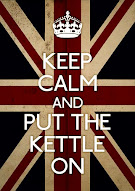 BOOKS
BOOKSBooks of The Times: Why'd He Do It? Post-Mortem of a Grisly Death
By JANET MASLIN
A sickening account of a murder and suicide that riveted post-Katrina New Orleans.
Zackery Bowen appears on the cover of “Shake the Devil Off” as a lanky, handsome guy in a baseball cap, sitting in the French Quarter of New Orleans and staring at the camera with the insouciance of an off-duty movie star. In one hand he holds a wine glass. In the other hand he holds a kitten.
No word on whether the kitten escaped Zack unscathed. But the soused-looking woman sitting next to him in this same photograph, Addie Hall, did not fare well. She wound up the victim of a murder that was grisly even by New Orleans’s high standards. Let’s skip the particulars except to say that “Gal Pal Gumbo” was The New York Post’s headline for a story about Addie’s grisly murder, and that one of the most pleasant assertions that Ethan Brown, Zack’s biographer, can make on his subject’s behalf is that rumors of Zack’s cannibalism were simply not true.
At this point it might be reasonable to ask why Mr. Brown decided to write a whole book about Zack, who wound up jumping off a roof after he messily dispatched Addie. One answer is that Mr. Brown happened to be in the neighborhood. He and his wife were celebrating their wedding anniversary in New Orleans in the fall of 2006, just as Zack and Addie and their story’s gory details became the talk of the town.
When Mr. Brown learned that Zack had endured a trifecta of earlier nightmares — military service in Kosovo, military service in Baghdad and then Hurricane Katrina — he wondered if this was not the story of a true American tragedy. So he decided to delve (his word, though wallow would be more accurate) into the sad particulars of Zack’s unrelentingly seedy life.
In his hagiographic “Zeitoun” Dave Eggers uses the Katrina ordeal of a single brave man to embody the transcendent decency that helped Abdulrahman Zeitoun survive a terrible ordeal. “Shake the Devil Off” is the flip side of that story. It becomes a bottom-feeding account of boozy, mindless cruelty despite Mr. Brown’s strenuous efforts to give it the moral heft of a war story and to paint Zack as a victim of post-traumatic stress disorder.
 This is not to say that Zack didn’t suffer, or that his suffering was not in some way emblematic of other veterans’ experiences. It’s to say that Mr. Brown, who reports this story with a heavy hand, tin ear and salacious eye, doesn’t make it matter.
This is not to say that Zack didn’t suffer, or that his suffering was not in some way emblematic of other veterans’ experiences. It’s to say that Mr. Brown, who reports this story with a heavy hand, tin ear and salacious eye, doesn’t make it matter.
“Shake the Devil Off” is filled with inarticulate testimony about who Zack was and how he got that way. When his father became a bartender at strip clubs, Zack’s mother says, “I was like, ‘This isn’t how it’s supposed to be.’ ” The crushing disappointment of Zack’s failure to become homecoming king at his California high school in 1995 is duly described.
So is the mating call (“Ya’ll want a shot of Jägermeister?”) with which 18-year-old Zack wooed Lana Shupack, the 28-year-old stripper who would become his wife. Once Zack enlisted in the 709th Military Police Battalion, Lana and her co-workers kept Zack supplied with strip-club photos that did not boost his morale.
The sections of the book that are about Zack’s exposure to war are no less perfunctory. The book explains how the spunkiest, most patriotic member of Zack’s unit, a young woman standing barely 5 feet tall to his 6 feet 10 inches, became an early casualty, and how this and many other losses around Zack hurt him. “He was happy-go-lucky and then he was just depressed,” one Army friend recalls. Zack’s size-17 ill-fitting boots and hammertoe troubles also become part of Mr. Brown’s story.
Bristling from a “general (under honorable conditions)” military discharge (instead of the “honorable discharge” his commander had recommended), which he found deeply unjust, Zack returned to New Orleans with a zest for bartending and not much else to sustain him. Then he met Addie, who is described here as having been a wonderful person except on those occasions when she wasn’t and whose abusive, alcohol-fueled “spells” were well known to those around her.
Yet Zack and Addie found something to make them flourish: the evacuation of New Orleans during Katrina and their decision to wait out the storm (“We’re bartenders so we’re well stocked”) in what Mr. Brown calls a “poststorm Shangri-la.” The storm that caused surreal misery for Mr. Zeitoun and his family was a kind of aphrodisiac for Addie and Zack.
“They liked the lifestyle we had during the hurricane,” a friend reports. “They liked camping out. They liked not having to work. They liked not having the responsibility of paying bills. They didn’t like the change back to normalcy.” But the flood waters retreated, taking with them some of Zack’s sanity. Still, he retained the ability to compartmentalize that he had developed in the service, to the point where he could calmly make notes about Addie’s decomposing body after having killed her during one of their frequent fights. Zack could forget all about Addie, go out bar hopping, pass out in a drunken stupor and only then remember that he had a girlfriend problem.
“Shake the Devil Off” sees all this as part of a tragic arc. And it spares no occasion for voyeurism. Once the story is over and Mr. Brown still has pages to fill, he assails the United States government policies regarding war, Katrina and veterans’ rights.
He watches television. (He is angered by Michael Moore’s high-handed hurricane talk on Keith Olbermann’s show.) And he resorts to domestic details of his own. The news that one of his dogs threw up in the back seat of his car at the time of Hurricane Gustav is one of the less sickening parts of Mr. Brown’s story.---
Copyright 2009 The New York Times Company | Privacy Policy




croppedsidebar.jpg)

.png)


















No comments:
Post a Comment